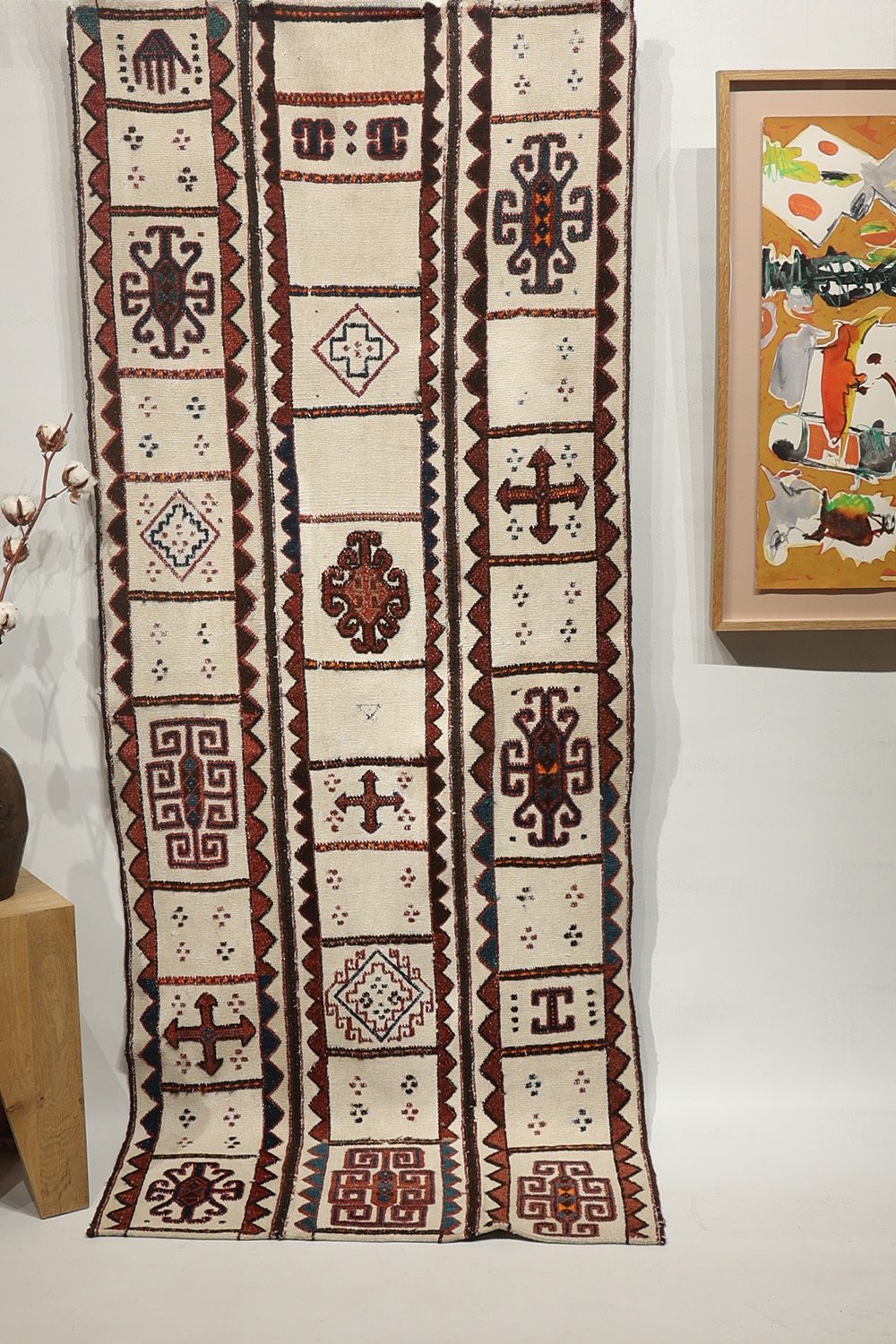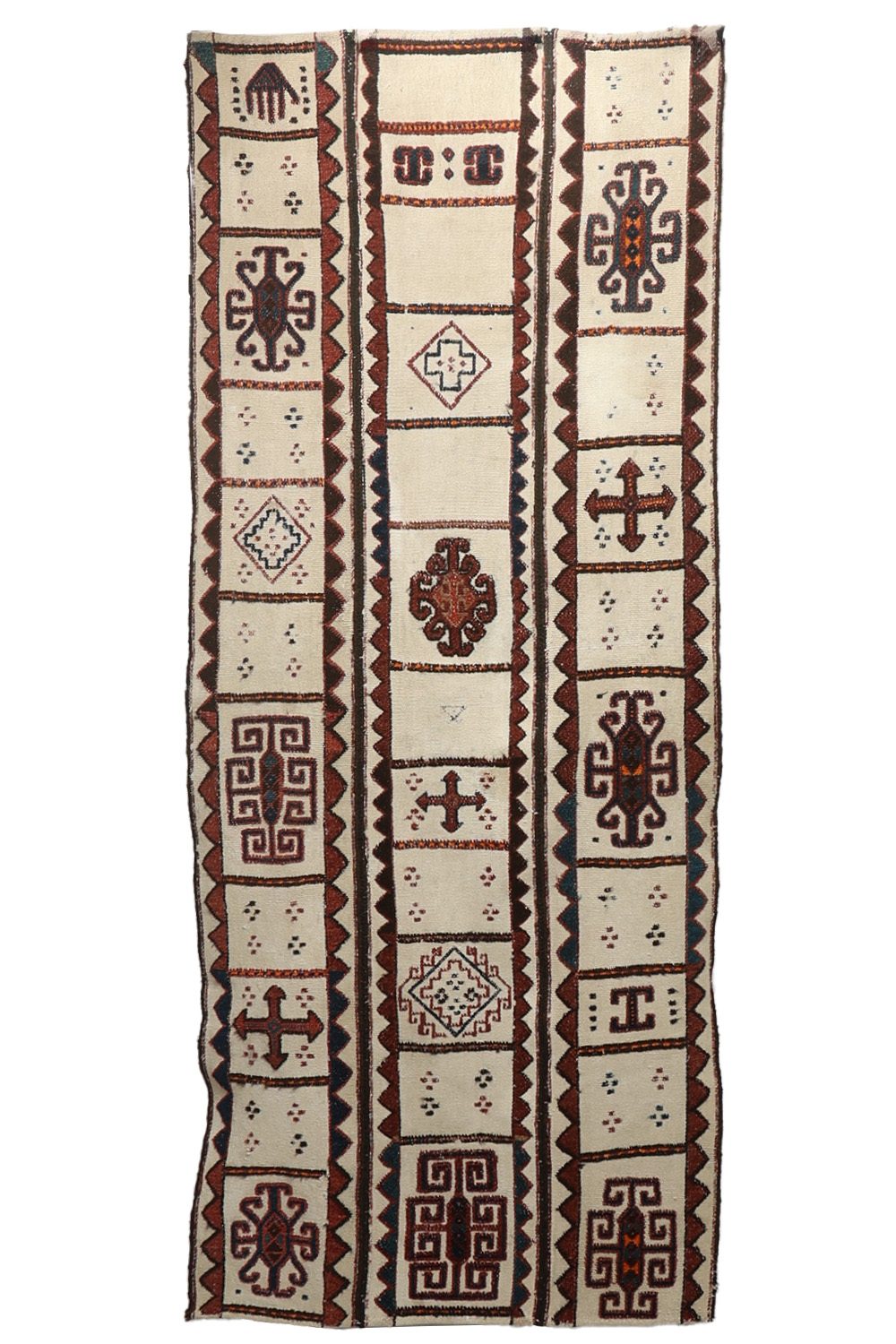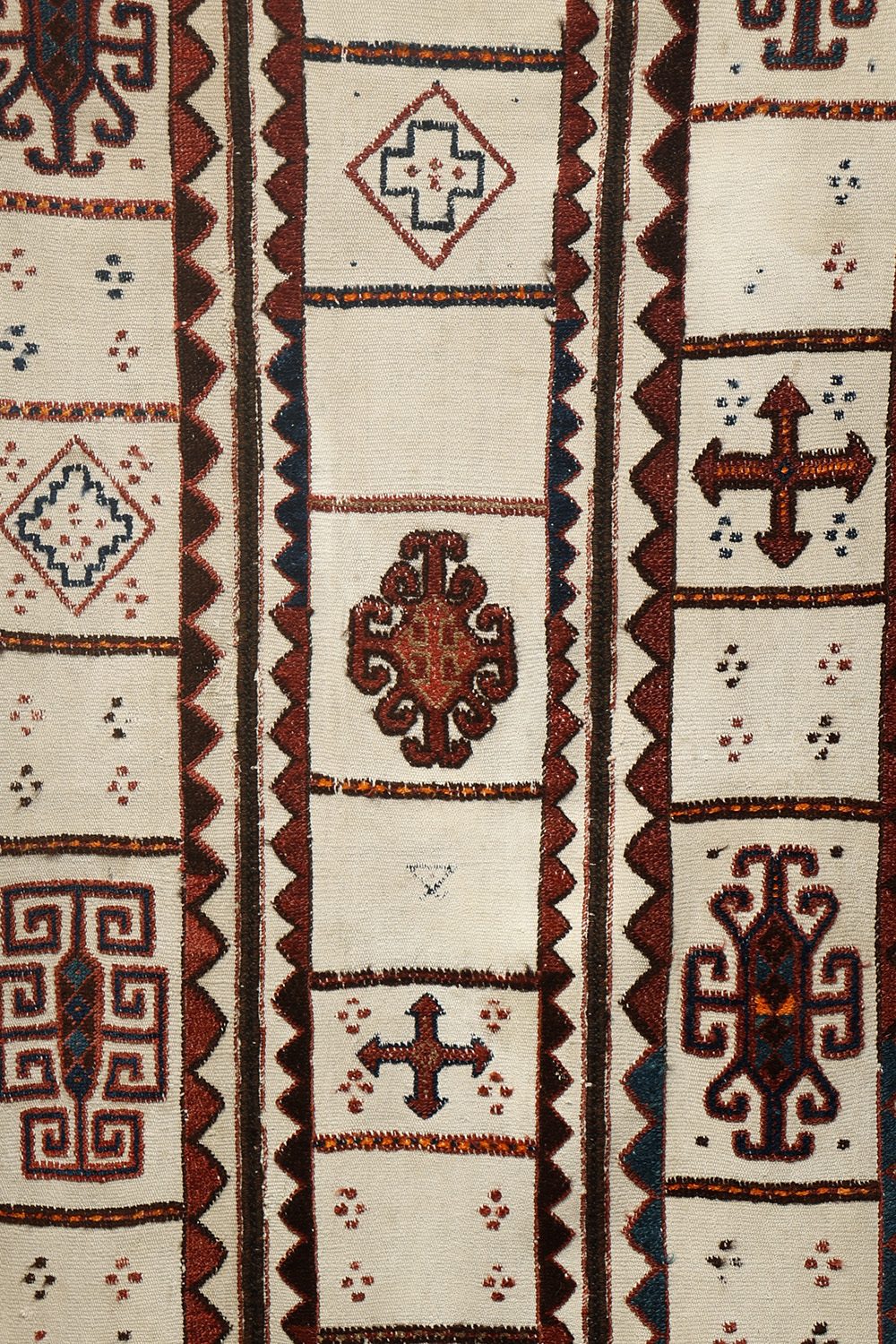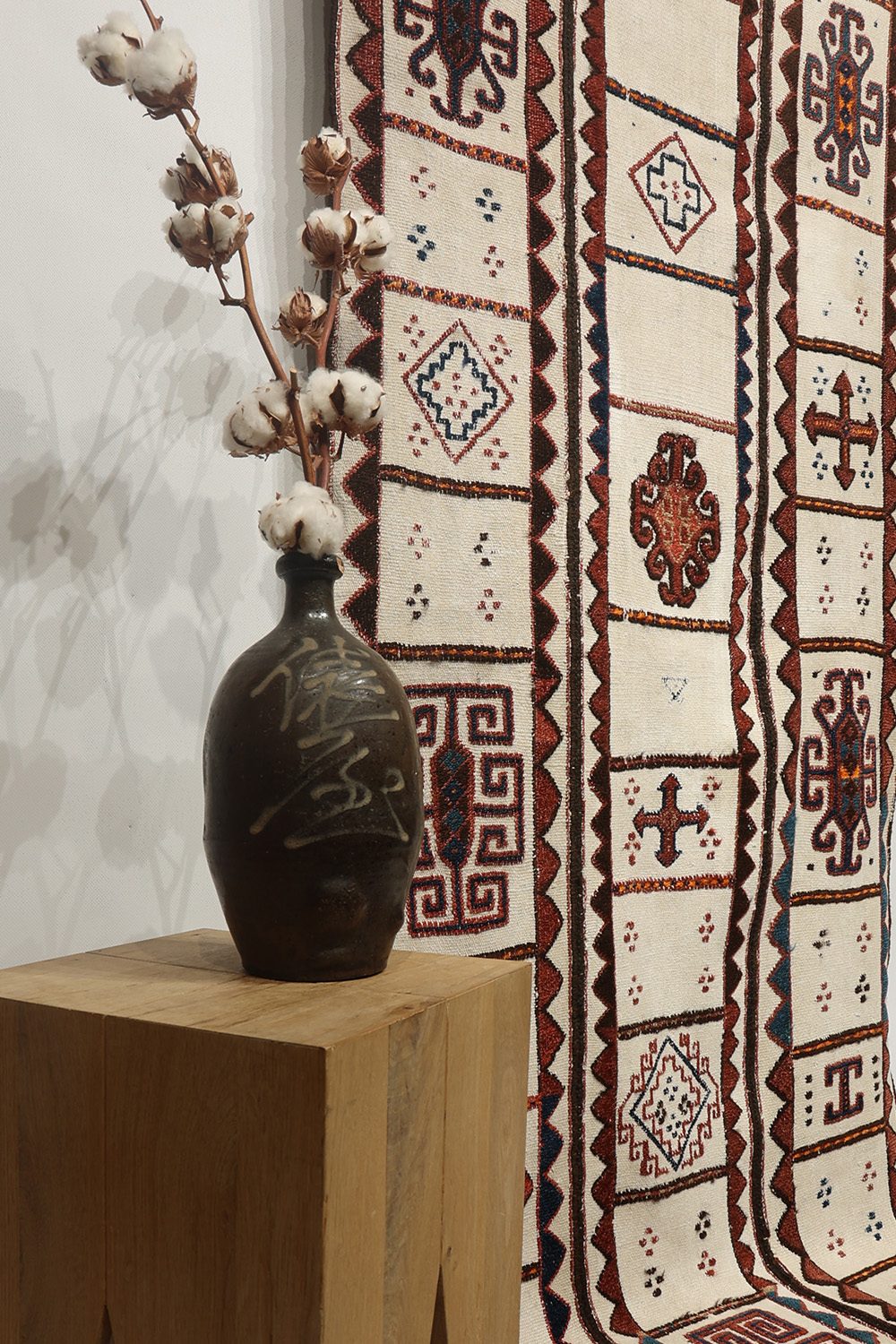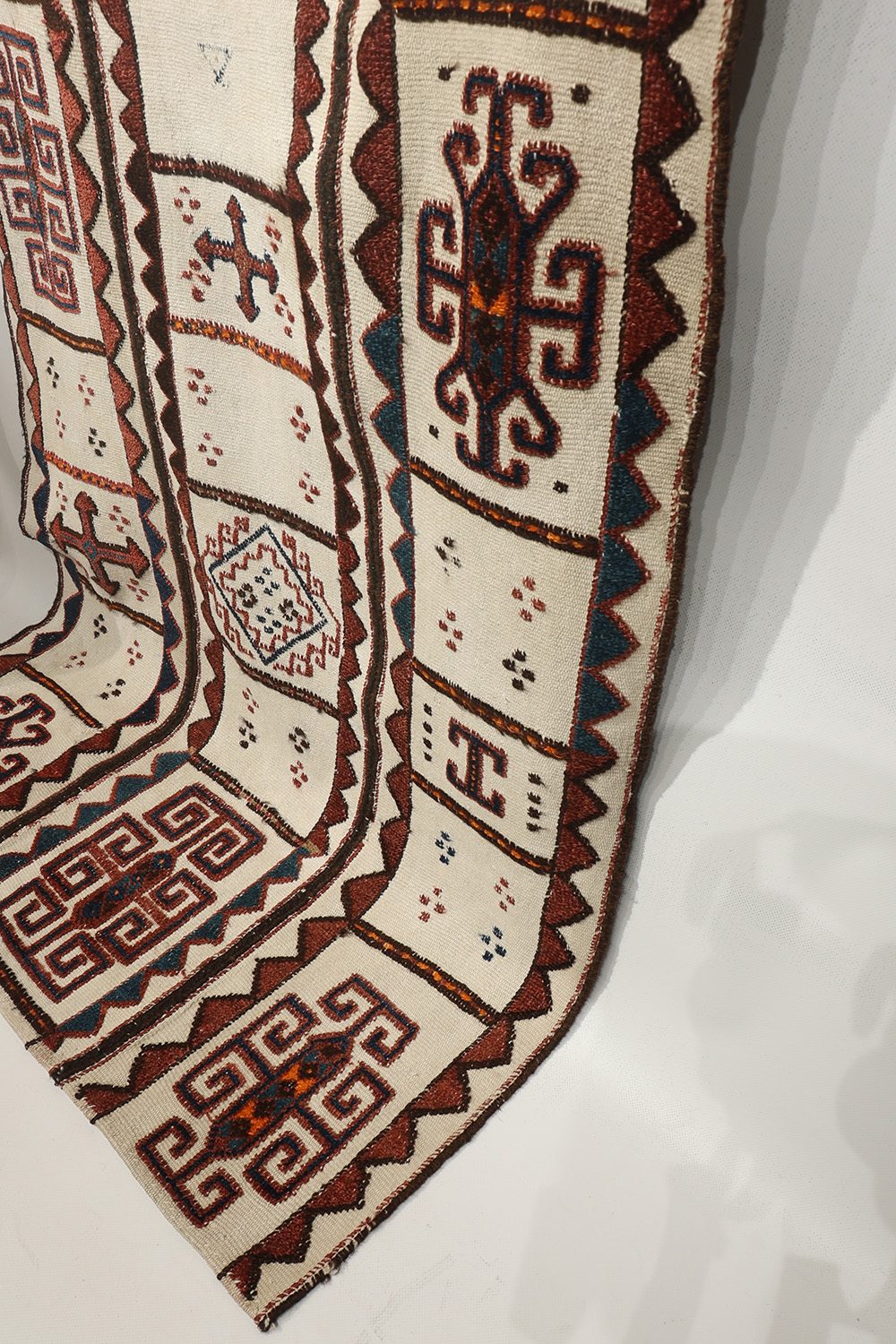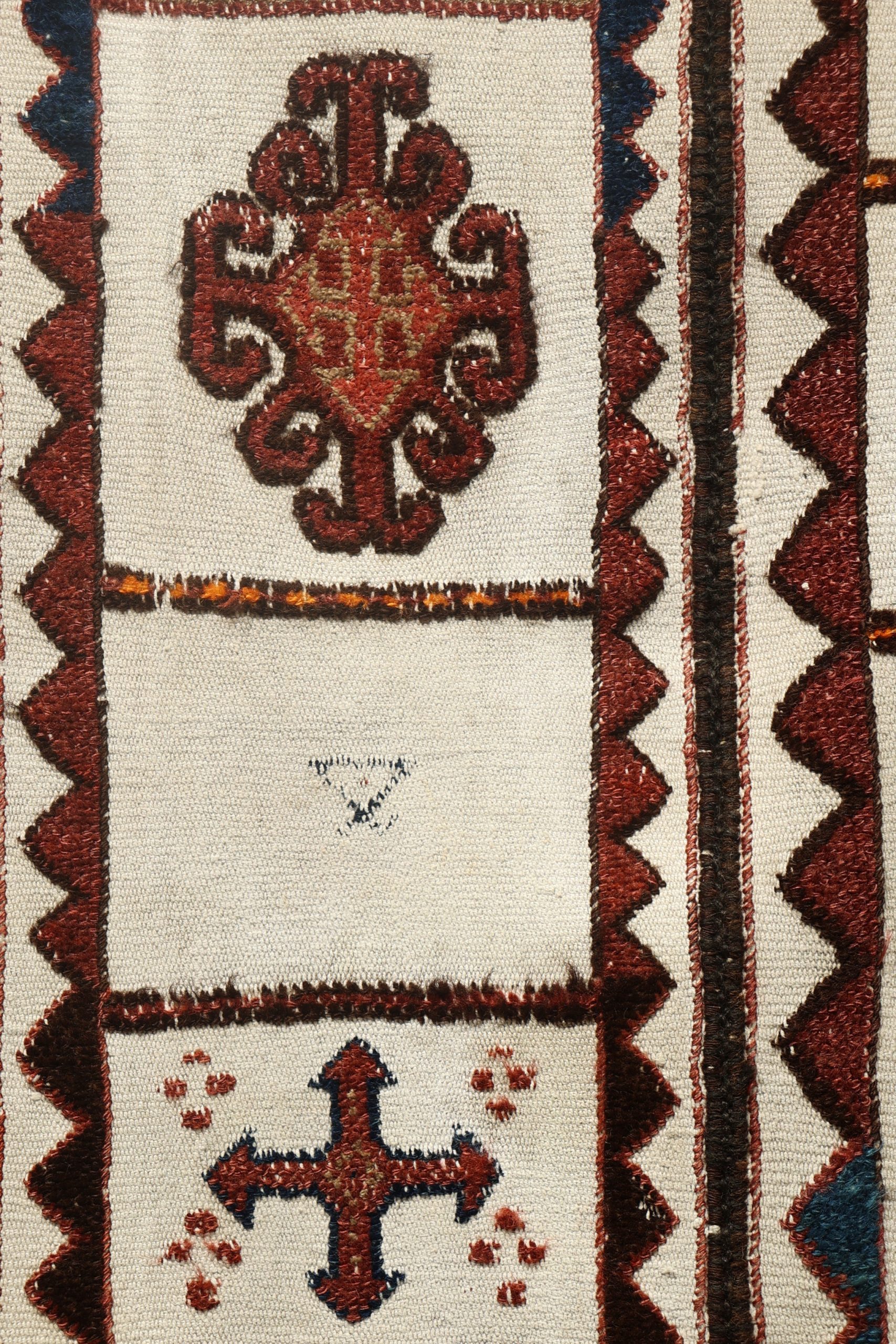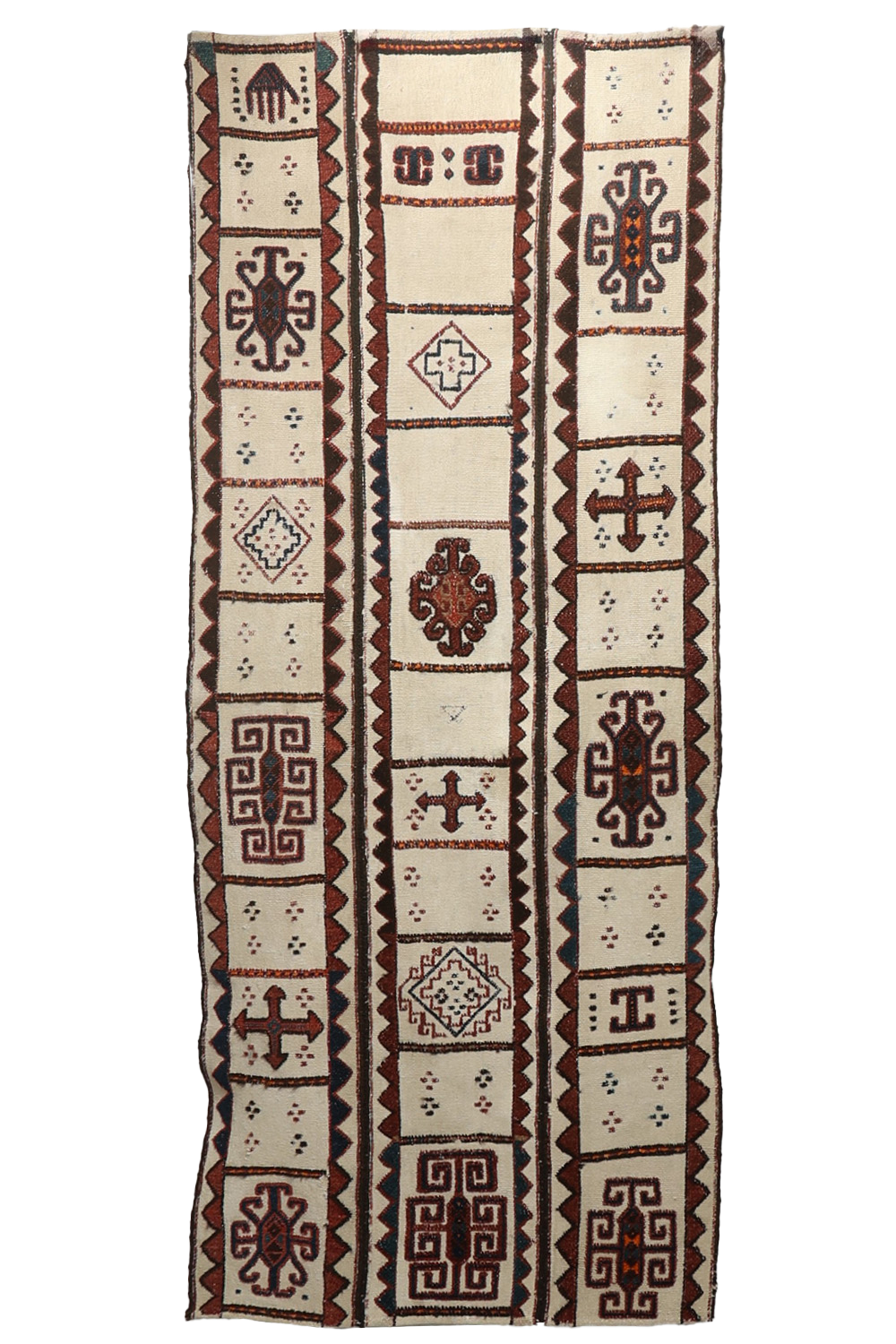965.00 €
A superb antique wedding curtain or shımıldıq used in Karakalpak weddings to keep the bride out of sight from the groom. Woven with an undyed cotton wool base in three parts joined together. The motifs are knotted in sheep´s wool and dyed with natural dyes. Some staining.
Material: 100% hand-spun sheep wool on a cotton background
Size: 212x82cms
Origin: Karakalpak tribes, Uzbekistan
Date of weaving: 1900
The Karakalpaks are an ethnically diverse Turkic-speaking people who mainly inhabit the isolated delta region of the lower Amu Darya, situated to the south of the Aral Sea. Their exact numbers are unknown but are probably close to 600,000. Their homeland is the Autonomous Republic of Karakalpakstan, formed by the Soviets in 1925. Despite its Autonomous Republic status, Karakalpakstan is effectively little more than just another province within the independent Republic of Uzbekistan, albeit the largest province, accounting for over one third of Uzbekistan’s land area. However, most of Karakalpakstan is occupied by barren and inhospitable desert. In the Soviet era its main use was for the production of cotton and the provision of isolated and secret testing sites for chemical and biological weapons. During the past decade or so, sizeable oil and natural gas reserves have been identified under the Ustyurt plateau and the bed of the Aral Sea.
The groom’s family were obliged to pay a bride price or qalın’, to compensate the girl’s family for her loss and this would be negotiated at the time of the marriage arrangement. In turn the young bride was obliged to prepare a complete dowry for herself and her new home. Embroidery and weaving were essential female skills and girls were taught them from an early age. By the age of 6 or 7 a girl could have already begun preparing her wedding dowry, assisted by older female friends and relatives.
The first “wedding” ceremony took place in the bride’s village when she was no more than 12 or 13 years old and involved members of her entire clan. On the following day the husband returned to his own village.
The astonishing feature of the Karakalpak wedding was that the young bride continued to live with her parents for up to three or maybe even five years. Her husband might visit her from time to time, but mostly he lived with his parents in his own village. The bride was free to make contact with other young men in her village and to participate in feasts and gatherings. In some instances a local liaison might result in a bride becoming pregnant and giving birth. Such events were not frowned upon and the husband generally adopted the illegitimate child. Soviet ethnographers have interpreted this phenomenon as a relic of a former ancient matriarchal tradition. Whether or not this was the case, we do know that in many former nomadic societies such as the Saka, the Sarmatians and the Qipchaqs, women had the same status as men, held positions of power and leadership, and became involved in military combat.
It was during this interim period that the serious work of completing the dowry took place. It was traditional to assemble a bes kiyim (literally five items of clothing): such as a dress or ko’ylek, coat or shapan, qızıl kiymeshek, cloak or jegde, and silk turban or tu’rme, along with all of the items for the yurt. The qızıl kiymeshek was the star item in her dowry and she would begin its preparation with a prayer. A girl might also embroider an aq kiymeshek or an aq jegde as a gift for her future mother-in-law.
The payment of the qalın’ was the necessary condition for the marriage to be concluded. After this the bride could move to her husband’s village and begin life as a married woman. The final wedding ritual (neke qıyıw) was often a two-day affair, commencing on an auspicious day like a Wednesday. On the first day the young bride would say goodbye to her family and friends and with the accompaniment of special farewell songs would depart in a donkey cart for her husband’s village. Just before entering her future father-in-law’s home she was dressed in her kiymeshek, helped by a proxy mother (murındıq-ene) who had been selected to act as her mentor. Every single hair on her head had to be hidden.
At the u’yleniw toy or main wedding feast, later the following day, the bride remained out of view in her kiymeshek behind the shımıldıq wedding curtain in her father-in-law’s yurt or mud-brick house (tam). Then the bride was presented to the husband’s family and village, her face covered by a white veil. After a short speech by a respected male elder her face was revealed to the crowd, a ritual known as the bet ashar (revealing the face). The bride would then present gifts to the village elders and youngsters within her new village. Later a local mullah or iyshan would bless the couple. If she were lucky, she and her groom would spend their wedding night in a bridal yurt, or otaw, provided by the groom’s parents but decorated with weavings from her dowry. Otherwise she would sleep in the home of her new family but behind the privacy of the wedding curtain.
In a very wealthy family a wedding could be a spectacular event with the bride dressed in five layers of clothing. In the 19th century it was traditional for the bride of a rich father to be dressed like a princess. She would wear a cross-stitch embroidered ko’k ko’ylek, or blue dress, a kiymeshek that at that time was probably white, and a stunning sa’wkele headdress. The sa’wkele was commissioned by the bride’s father and became part of her dowry.
Text; http://www.karakalpak.com/marriage.html
1 in stock
Additional information
| Weight | 3 kg |
|---|
Subscribe and receive the lastest news
